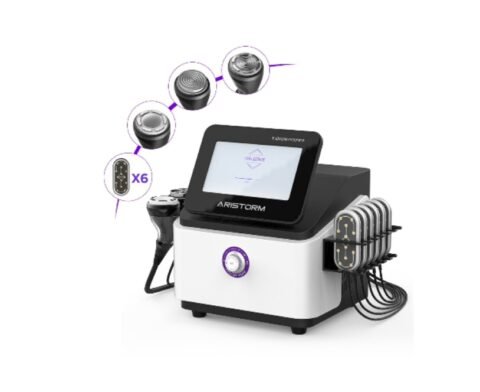Cosmetic surgery has increasingly become a preferred option for individuals looking to enhance their appearance or correct imperfections. As these procedures gain popularity, understanding the intricacies of the recovery process is crucial. A well-managed recovery not only ensures the best possible outcomes but also minimizes the risk of complications. Whether you’re considering a minor adjustment or a significant transformation, knowing what to expect after surgery can help you prepare both mentally and physically.
Understanding the Recovery Timeline
Recovery from cosmetic surgery can vary significantly depending on the type of procedure performed. Each surgery comes with its own set of recovery timelines and post-operative care requirements. For instance, minor procedures typically have shorter recovery periods compared to more invasive surgeries. Most patients can expect the initial healing to occur within a week, with the minor swelling and discomfort subsiding gradually. It’s essential for patients to understand these timelines to set realistic expectations and plan their schedules accordingly.
Immediate Post-Surgery Care
The first 24 to 48 hours after cosmetic surgery are critical for a successful recovery. During this period, patients must adhere strictly to the care instructions provided by their surgeons. Common recommendations include resting adequately, keeping the head elevated, and applying ice packs to reduce swelling. These steps are vital in preventing excessive bleeding and swelling, and in promoting healing.
For instance, patients who undergo earlobe reduction surgery are often advised to avoid any activities that might strain the ears, such as wearing headphones or using earbuds, until the site is fully healed. This kind of precise guidance helps prevent complications and ensures that the recovery is as smooth as possible.
Managing Pain and Discomfort
Post-operative pain and discomfort are expected aspects of any surgical recovery. Most cosmetic surgeries require some form of pain management, which may include prescription pain relievers or over-the-counter medication like acetaminophen or ibuprofen. It is crucial for patients to follow the dosage instructions carefully to avoid any adverse effects.
Moreover, some patients prefer to complement their pain management regimen with natural remedies such as arnica or aloe vera, which can help reduce bruising and soothe the skin. Gentle exercises, recommended by the surgeon, can also aid in reducing stiffness and improving blood circulation, which is essential for healing. However, it’s important to start any physical activity only under the guidance of a healthcare professional to avoid disrupting the surgical site.
Monitoring for Complications
Recognizing the signs of potential complications early is essential in the recovery process. Common warning signs include excessive redness, swelling, discharge from the incision sites, or fever. These symptoms could indicate infections or other issues that might require immediate medical attention.
Patients are encouraged to monitor their recovery closely and maintain regular follow-up appointments with their surgeon. This ongoing communication allows the surgeon to assess the healing process and address any concerns promptly. It also provides patients with peace of mind, knowing that their recovery is progressing as expected.
Long-term Care and Results
Once the immediate recovery phase is over, the focus shifts towards long-term care and maintaining the results of the surgery. For procedures such as earlobe reduction, the emphasis is often on minimizing scar visibility and protecting the area from excessive sun exposure, which can exacerbate scarring. Patients are typically advised to apply silicone gel strips or scar-reducing creams that help make the scars less noticeable over time.
Another crucial aspect of long-term care involves adhering to a healthy lifestyle. Maintaining a stable weight, eating a balanced diet, and avoiding smoking are all important factors that can affect the longevity of the surgical results. For instance, fluctuations in weight can stretch the skin and alter the results of body contouring procedures. Similarly, smoking can impair blood flow and delay healing, potentially compromising the appearance of the surgical site.
Follow-up visits with the surgeon are essential. These appointments allow the surgeon to monitor the healing process and ensure that the recovery is proceeding as expected. It’s also an opportunity for patients to discuss any concerns or dissatisfaction with the results, which can sometimes be addressed with minor revisions or treatments.
Psychological Aspects of Recovery
Recovery from cosmetic surgery isn’t just physical—it’s also psychological. Adjusting to changes in one’s appearance can be emotionally challenging. Some individuals may experience a period of emotional ups and downs, commonly known as the post-surgery blues. This can include feelings of regret, anxiety, or frustration during the healing process, especially if the immediate results aren’t what they expected due to swelling or bruising.
It’s important for patients to have realistic expectations and understand that final results can take time to manifest. Support from friends, family, or a professional counselor can be incredibly beneficial during this time. Some surgeons also recommend joining support groups where patients can connect with others who have undergone similar procedures. Sharing experiences and tips can provide comfort and practical advice during the recovery journey.
Focusing on self-care activities, such as reading, meditation, or light walks, can also help in managing stress and improving overall well-being during this period. Patients should engage in activities that they find relaxing and enjoyable, which can aid significantly in their emotional recovery.
Embracing the New You
As the recovery from cosmetic surgery concludes, patients gradually start to see the fruits of their patience and meticulous care. The key to a successful recovery involves closely following post-operative instructions, attending follow-up appointments, and taking care of both the physical and psychological aspects of healing.
Understanding that recovery is a gradual process helps in setting the right expectations and preparing for the changes. With the right care, the journey to embracing the new you can be fulfilling and transformative. Keep in mind that the ultimate goal of cosmetic surgery is to enhance one’s confidence and satisfaction with their appearance. By taking the time to properly recover, patients ensure that they enjoy the best possible outcomes.
Embracing your new appearance requires patience, support, and careful attention to your body’s needs. By adhering to the comprehensive guidelines discussed—from immediate care to long-term maintenance and psychological support—patients can navigate their recovery with confidence and ease, leading to a satisfying and positive outcome.





